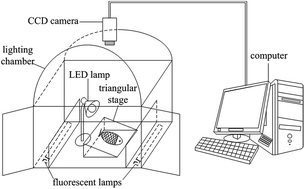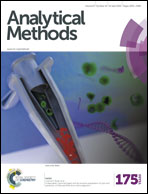A data fusion detection method for fish freshness based on computer vision and near-infrared spectroscopy
Abstract
Freshness is one of the most significant parameters of fish quality. This study aims to develop a new rapid non-destructive technique to assess fish freshness. Two different technologies including computer vision and near-infrared spectroscopy (NIR spectroscopy) were employed in the detection. Subsequently a new data fusion detection method was developed to improve the accuracy of classification by combining the inspection data of computer vision with that of NIR spectroscopy. Parabramis pekinensis bought from a local market were taken as experimental samples. The total volatile basic nitrogen (TVB-N) content of the samples was measured as an indicator of fish freshness using conventional methods. Computer vision and NIR spectroscopy were used to acquire image information for organoleptic changes and spectrum information for structural changes in the fish samples during storage, respectively. Principal component analysis (PCA) was used for data compression to reduce the dimensionality of the data set while essential information was retained, which made the analysis easier than it would have been for the original huge data set. A back propagation artificial neural network (BP-ANN) was used to build a prediction model by obtaining a non-linear relation between the fish freshness and the body changes during storage. The results showed that computer vision technology outperformed NIR spectroscopy techniques, for the BP-ANN model reached a 94.17% success rate in the training set and 90.00% in the prediction set using the computer vision technology, while the model of NIR spectroscopy reached 86.67% and 80.00% in the training set and prediction set respectively. This showed improved fish freshness classification using computer vision technology rather than the NIR spectroscopic method. Therefore, the data from the two techniques were considered simultaneously, using the classification model BP-ANN, which achieves the optimum performance of 96.67% and 93.33% corresponding to the training set and prediction set respectively using data fusion. Therefore, this demonstrated for the first time the feasibility and superiority of data fusion by integrating computer vision and NIR spectroscopy in the classification of fish freshness.


 Please wait while we load your content...
Please wait while we load your content...